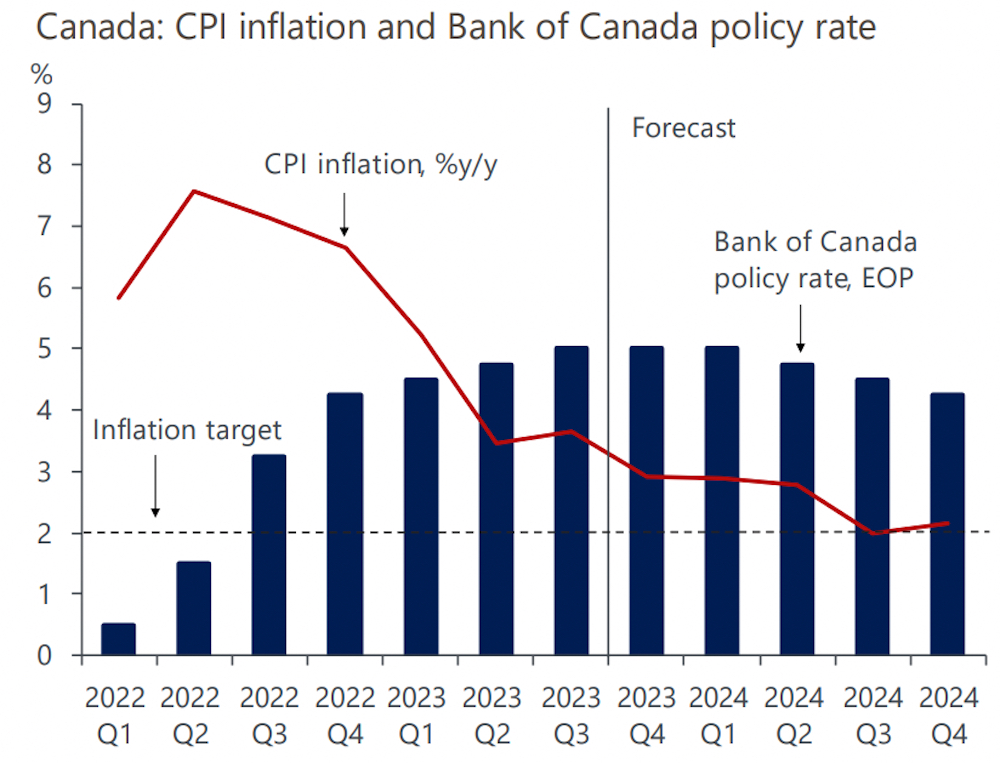EV Mandate Backlash: Car Dealerships Renew Their Resistance

Table of Contents
Financial Hurdles and Infrastructure Needs
One of the primary drivers of the EV mandate backlash is the substantial financial investment required to adapt to the new reality of electric vehicle sales. Dealerships face high upfront costs associated with establishing the necessary infrastructure to support EV sales and service. This includes the significant expense of installing charging stations, purchasing specialized tools for EV repair and maintenance, and investing in comprehensive employee training programs to equip their staff with the knowledge and skills needed to handle electric vehicles effectively.
Furthermore, many dealerships express concern about reduced profit margins on EVs compared to gasoline-powered vehicles. The higher initial cost of EVs often translates to lower profit margins, particularly when considering the additional infrastructure investments required. This financial strain is amplified by the uncertainty surrounding the long-term viability of the EV market and the return on investment for these substantial upfront expenditures.
- High cost of installing EV charging stations: The installation can be expensive, requiring significant electrical upgrades and potentially specialized contractors.
- Need for specialized training for mechanics and salespeople: Understanding EV technology, batteries, and charging systems requires dedicated training programs, adding to operational costs.
- Lower profit margins on EV sales due to higher initial vehicle costs: Dealerships often receive smaller profit margins on EVs, impacting overall profitability.
- Uncertainty about long-term EV market viability and return on investment: The rapid technological advancements in the EV market create uncertainty about long-term market trends and profitability.
Consumer Demand and Market Readiness
Another significant factor contributing to the EV mandate backlash is the concern about insufficient consumer demand for EVs in certain regions and demographics. While EV sales are growing, several factors hinder widespread adoption. Range anxiety—the fear of running out of battery power before reaching a charging station—remains a significant barrier for many potential buyers. The limited availability of public charging infrastructure, particularly in rural areas, further exacerbates this concern. Coupled with the generally higher purchase price of EVs compared to gasoline-powered vehicles, these factors create a considerable hurdle to consumer adoption.
- Limited charging infrastructure in many areas: A lack of convenient and readily accessible charging stations deters potential EV buyers.
- Concerns about EV range and charging time: The limited range of some EVs and the relatively longer charging times compared to refueling gasoline vehicles remain key concerns.
- High initial cost of EVs compared to gasoline vehicles: The higher price point of EVs makes them inaccessible to a significant portion of the population.
- Lack of consumer awareness and understanding of EV technology: Many consumers remain unfamiliar with EV technology and its benefits, hindering adoption.
Regulatory Challenges and Compliance Costs
Navigating the complex web of regulations surrounding EV sales and infrastructure presents another significant challenge for dealerships. The ever-changing landscape of EV regulations, coupled with the administrative burden of complying with these mandates, adds considerable costs and complexities to their operations. Dealerships face the prospect of hefty penalties for non-compliance, creating further financial pressure and uncertainty. Accurate forecasting of future EV sales under fluctuating regulatory environments also presents a significant challenge for effective business planning.
- Complex and ever-changing EV regulations: Keeping up with evolving regulations at the state and federal level requires considerable resources and expertise.
- High costs associated with regulatory compliance: Compliance with EV mandates involves significant administrative expenses and potential fines.
- Potential penalties for non-compliance with EV mandates: Failure to meet EV sales quotas or comply with infrastructure requirements can lead to significant penalties.
- Difficulty in accurately forecasting future EV sales: The uncertainty surrounding EV market growth and consumer demand makes accurate sales forecasting challenging.
The Impact on Rural Dealerships
The challenges posed by EV mandates are particularly acute for rural dealerships. Consumer demand for EVs is generally lower in rural areas due to factors such as longer commutes, limited charging infrastructure, and a lower concentration of EV-friendly businesses. The higher costs of installing and maintaining charging infrastructure in sparsely populated areas, along with longer transportation times for service and repairs, further exacerbate the difficulties faced by these dealerships.
- Lower consumer demand for EVs in rural areas: The limited market for EVs in rural areas makes it difficult for dealerships to justify the significant investments required.
- Higher costs of installing and maintaining charging infrastructure in rural locations: The infrastructure costs are significantly higher in rural areas due to the distances between locations and the need for more extensive grid upgrades.
- Longer transportation times for service and repairs: Rural dealerships often face longer transportation times for both service and repair, increasing their operational costs and potentially impacting customer satisfaction.
Conclusion
The EV mandate backlash highlights the significant challenges faced by car dealerships in adapting to the rapid shift towards electric vehicles. Financial hurdles related to infrastructure investments and reduced profit margins, concerns about insufficient consumer demand and market readiness, and the complexities of navigating new regulations and compliance requirements are all contributing factors. Addressing the EV mandate backlash requires a collaborative approach. Open dialogue and practical solutions are crucial to navigating these challenges and ensuring a successful transition to a future powered by electric vehicles. Finding a balance between environmental goals and the economic realities faced by dealerships is vital for a smooth and effective transition to a sustainable automotive industry.

Featured Posts
-
 The Reach Of Trumps Campus Crackdown A Nationwide Analysis
Apr 28, 2025
The Reach Of Trumps Campus Crackdown A Nationwide Analysis
Apr 28, 2025 -
 Hollywood Shutdown Writers And Actors On Strike What It Means For The Industry
Apr 28, 2025
Hollywood Shutdown Writers And Actors On Strike What It Means For The Industry
Apr 28, 2025 -
 160 Game Hit Streak Snapped The Orioles Broadcaster Jinx
Apr 28, 2025
160 Game Hit Streak Snapped The Orioles Broadcaster Jinx
Apr 28, 2025 -
 Grim Retail Sales Data Implications For Bank Of Canada Interest Rates
Apr 28, 2025
Grim Retail Sales Data Implications For Bank Of Canada Interest Rates
Apr 28, 2025 -
 Jan 6 Witness Cassidy Hutchinson To Publish Memoir This Fall
Apr 28, 2025
Jan 6 Witness Cassidy Hutchinson To Publish Memoir This Fall
Apr 28, 2025
Latest Posts
-
 Red Soxs Shifting Lineup Impact Of Outfielders Return And Casas Lowered Spot
Apr 28, 2025
Red Soxs Shifting Lineup Impact Of Outfielders Return And Casas Lowered Spot
Apr 28, 2025 -
 Analysis Red Sox Lineup Changes Following Outfielders Return And Casas Demotion
Apr 28, 2025
Analysis Red Sox Lineup Changes Following Outfielders Return And Casas Demotion
Apr 28, 2025 -
 Updated Red Sox Lineup Casas Position Change And Outfielders Reinstatement
Apr 28, 2025
Updated Red Sox Lineup Casas Position Change And Outfielders Reinstatement
Apr 28, 2025 -
 Red Sox Lineup Outfielder Returns Casas Moves Down In The Order
Apr 28, 2025
Red Sox Lineup Outfielder Returns Casas Moves Down In The Order
Apr 28, 2025 -
 Triston Casas Continued Slide Red Sox Lineup Adjustment And Outfielders Return
Apr 28, 2025
Triston Casas Continued Slide Red Sox Lineup Adjustment And Outfielders Return
Apr 28, 2025
